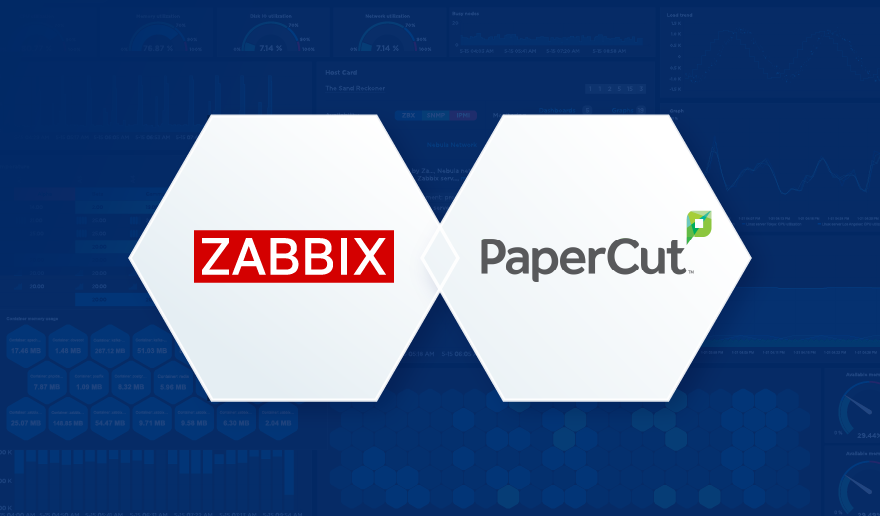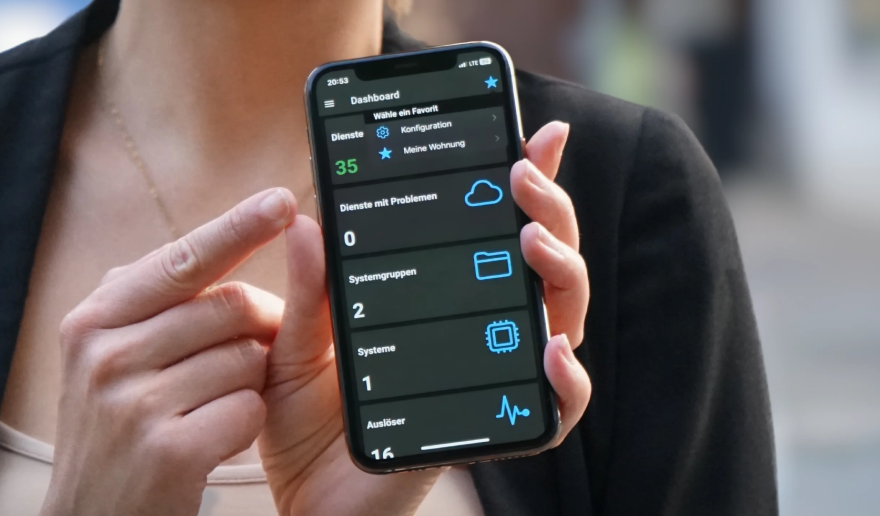Being on duty in a 24×7 IT team might not be fun. Planning duty schedules in Excel, having a shared on-call phone, or searching relevant information in a sea of emails makes it even worse. There is a better way. Integrating the lightweight alerting app SIGNL4 with Zabbix makes the life of an on-call engineer easier, and it allows the IT manager to see what’s going on at any time.
Real-Life Customer Stories
Hi, I am Ronald Czachara, co-founder of Derdack, a German software company specialized in alerting solutions. Recently, I interviewed some customers that use Zabbix in conjunction with our lightweight, app-based alerting service SIGNL4. Let me share some of the insights on how users benefit from both tools to provide exceptional IT services and, at the same time, making the life of an on-call engineer a lot easier.
The Life as a Zabbix User and On-Call Engineer
Zabbix is a great and versatile monitoring tool. It helps organizations to monitor their network, servers, applications, services as well as cloud infrastructure. You can easily extend it, and it even offers scripting capabilities. Customers love this.
However, here come some typical use cases on how integrating SIGNL4 with Zabbix actually solves some real-world problems.
Use Case: On-Call Planning
Problem:
One of the users works in a team together with five other people. Their IT is crucial for their business and needs to be available 24×7. Therefore, each additional week another colleague is on-call. How do they plan the on-call duties? Well, like many other companies, they use – Excel. Of course, this is a bit cumbersome, and sometimes changes done by one person are overridden by another person.
As for alerting channels, the customer used email and a self-made script that could make phone calls. Every Monday morning, they have their duty handover to the next colleague. So, they check the Excel sheet to see who is on duty, and then they reconfigured a call forwarding in their master phone to the next guy’s mobile.
Solution:
SIGNL4 comes with on-call planning built-in. The users can now conveniently plan their duties in the Web portal, and they have punched in and out automatically with no need to fiddle with manual call forwarding anymore.
For the more spontaneous handovers – for example, if someone gets sick – it is always possible to punch in and out manually directly from within the mobile app.
Use Case: Get the alert and filter through the noise
Problem:
Sometimes the customers got calls at night. Sometimes this was a critical error, and they had to take care. But sometimes it was just a false alert. They only recognized this when they checked the emails because the voice call did not convey all the necessary information, at least not in an understandable way.
For the less critical alerts, they sent pure email notifications to the whole team, and then they needed to coordinate who takes over. This took some time, and it also happened that they missed an alert in the flood of all other emails.
Solution:
Besides push, SIGNL4 also supports SMS and voice calls (at no extra cost in all commercial plans). The users can now configure what the most suitable notification method for a given type of alert is. The voice call is still great to wake somebody up at night in case of a critical issue. But then, they can use the app to see all the necessary details of the problem.
Using alert categories, it is possible to see what the alert is about at first sight. Here are some examples.
- Critical Network Alert: Red color, app push, SMS text, and then voice calls, network icon.
- Minor Database Alert: Blue color, app push, database icon.
- Maintenance Information: Gray color, app push with no sound, wrench icon.
If someone cannot acknowledge the alert, it gets escalated to a backup person. If someone needs help, they can chat with other team members within the app about a specific issue. This is all part of a particular alert and remains to be available for later reference.
Use Case: Auto-recovery
Problem:
Some IT systems support auto-recovery mechanisms. For example, a service or server is restarted automatically when a problem was detected. After that, everything is back to normal, and the problem in Zabbix is marked as solved again. For the on-call engineer, this might be cumbersome because he might get the phone call at night and then only recognizes that the issue is solved already when checking the system or the Zabbix console.
Solution:
When a problem is marked as resolved in Zabbix, this information is sent to SIGNL4, and the alert automatically gets marked as resolved there as well.
Even better, the users can configure a delayed notification of five minutes or so. Only if the problem is still present in Zabbix after five minutes the user gets the notification and maybe a wake-up call at night. If the problem is automatically resolved within five minutes, the users can continue their night sleep and see the resolved alert the next morning.
Use Case: Know what’s going on
Problem:
In case of an actual IT problem, the users work on it and, when ready, update the status in Zabbix. This is important to the management, and the guys in the operations center can see the actual status of an issue and whether someone takes care of the Zabbix dashboard. In some cases, the teams are not even on the same continent, and time zones play a role.
When the engineer solved a problem in the middle of the night, he sometimes updated the status in Zabbix only the next morning. Sometimes, their boss got called by a customer at night. When she did not see enough information in Zabbix, she called the engineer again. Of course, this was quite stressful for all sides.
Solution:
SIGNL4 offers a two-way connector to reflect status changes in the SIGNL4 app automatically in the Zabbix dashboard. So, if a user now acknowledges, annotates, or closes an alert in SIGNL4, this information is available in the Zabbix portal immediately. The manager and the operations center always know what is going on now.
The implementation of SIGNL4 is super quick and easy. In fact, SIGNL4 is available as a standard media type in Zabbix 5.0 and higher.
Why SIGNL4?
When critical systems fail, SIGNL4 is the fastest way to alert your staff, engineers, IT admins on call, and “in the field.” SIGNL4 provides reliable notifications via mobile app push, text, and voice call with tracking, escalations, and duty schedule. You can get the SIGNL4 app at https://www.signl4.com.
Mobile workers are not able to sit in front of a Zabbix dashboard and actively monitor problems. SIGNL4 enables Zabbix to notify the mobile teams in the field or on call in real-time. This speeds up their response significantly and frees resources in the operations.
Pairing Zabbix with SIGNL4 can enhance your daily operations with an extension to your team wherever it is. The two-way integration allows service engineers or IT administrators not only to receive alerts but also to acknowledge, annotate, and close alerts, no matter where they are.
How it Works?
With Zabbix version 5.0 and higher, SIGNL4 is an integral part of Zabbix and available as a Media Type for Alerting. With a dedicated Zabbix connector app at the SIGNL4 side, it is also possible to acknowledge, annotate, and close alerts directly from the mobile app. This information is then immediately available in Zabbix.
You can see the integration in action in the following video:









 Prev Post
Prev Post 




